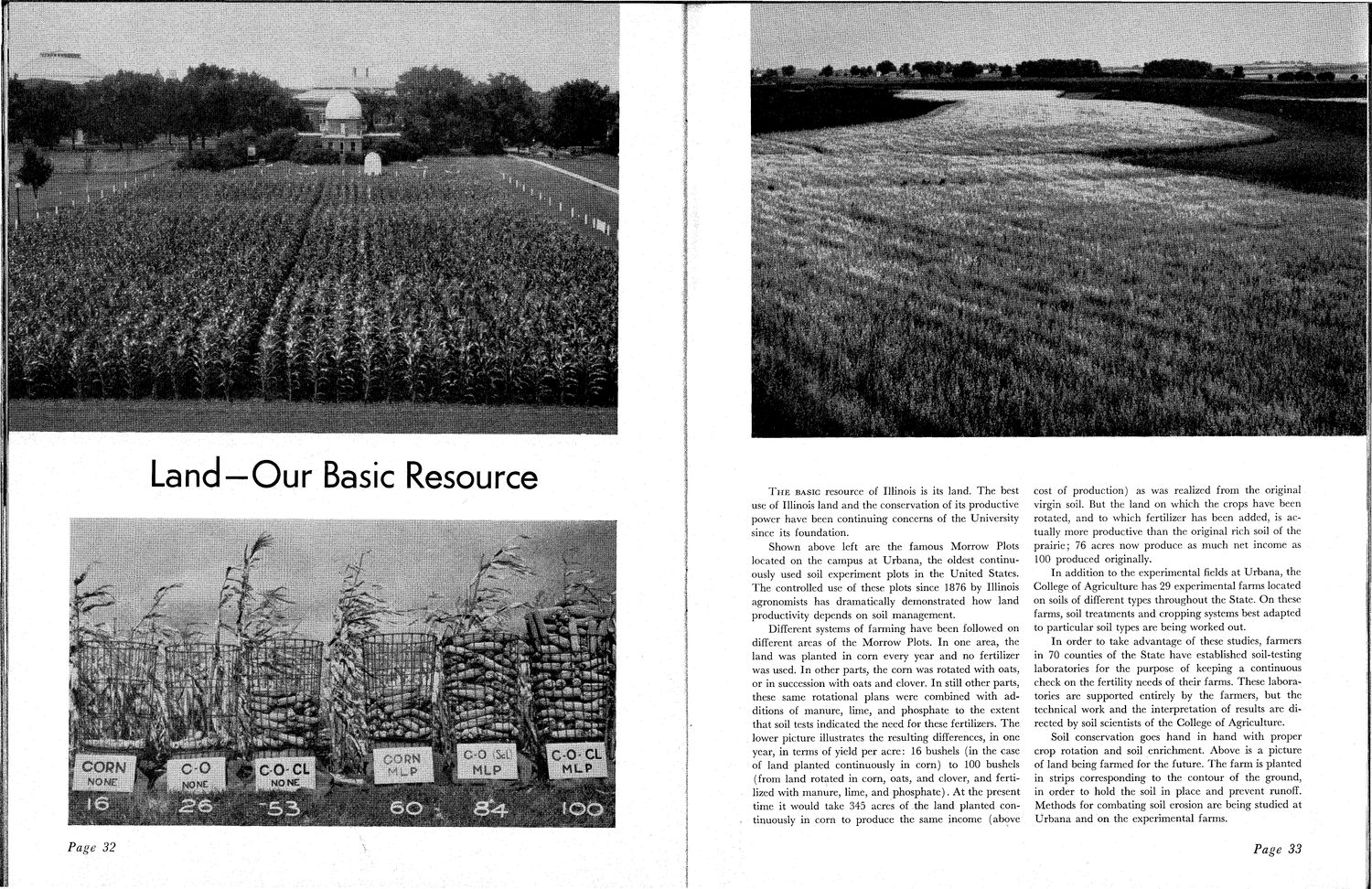| |
| |
Caption: Book - Research on Campus (1949)
This is a reduced-resolution page image for fast online browsing.

EXTRACTED TEXT FROM PAGE:
Land—Our Basic Resource T H E BASIC resource of Illinois is its land. T h e best use of Illinois land and the conservation of its productive power have been continuing concerns of the University since its foundation. Shown above left are the famous Morrow Plots located on the campus at Urbana, the oldest continuously used soil experiment plots in the United States. T h e controlled use of these plots since 1876 by Illinois agronomists has dramatically demonstrated how land productivity depends on soil management. Different systems of farming have been followed on different areas of the Morrow Plots. In one area, the land was planted in corn every year and no fertilizer was used. I n other parts, the corn was rotated with oats, or in succession with oats and clover. I n still other parts, these same rotational plans were combined with additions of manure, lime, and phosphate to the extent that soil tests indicated the need for these fertilizers. The lower picture illustrates the resulting differences, in one year, in terms of yield per acre: 16 bushels (in the case of land planted continuously in corn) to 100 bushels (from land rotated in corn, oats, and clover, and fertilized with manure, lime, and phosphate). At the present time it would take 345 acres of the land planted continuously in corn to produce the same income (above cost of production) as was realized from the original virgin soil. But the land on which the crops have been rotated, and to which fertilizer has been added, is actually more productive than the original rich soil of the prairie; 76 acres now produce as much net income as 100 produced originally. In addition to the experimental fields at Urbana, the College of Agriculture has 29 experimental farms located on soils of different types throughout the State. O n these farms, soil treatments and cropping systems best adapted to particular soil types are being worked out. In order to take advantage of these studies, farmers in 70 counties of the State have established soil-testing laboratories for the purpose of keeping a continuous check on the fertility needs of their farms. These laboratories are supported entirely by the farmers, but the technical work and the interpretation of results are directed by soil scientists of the College of Agriculture. Soil conservation goes hand in hand with proper crop rotation and soil enrichment. Above is a picture of land being farmed for the future. T h e farm is planted in strips corresponding to the contour of the ground, in order to hold the soil in place and prevent runoff. Methods for combating soil erosion are being studied at U r b a n a and on the experimental farms. Pag<? 32 Page 33
| |